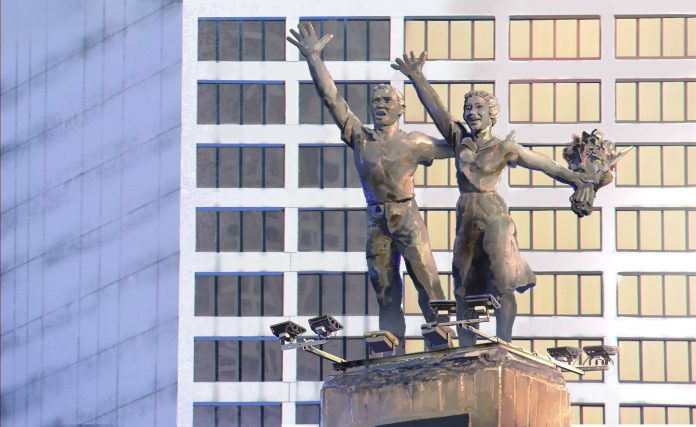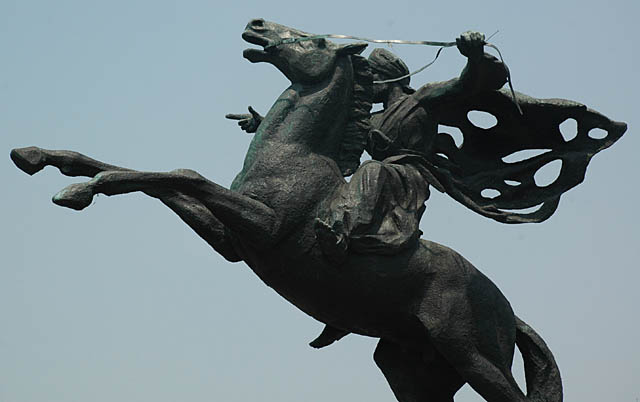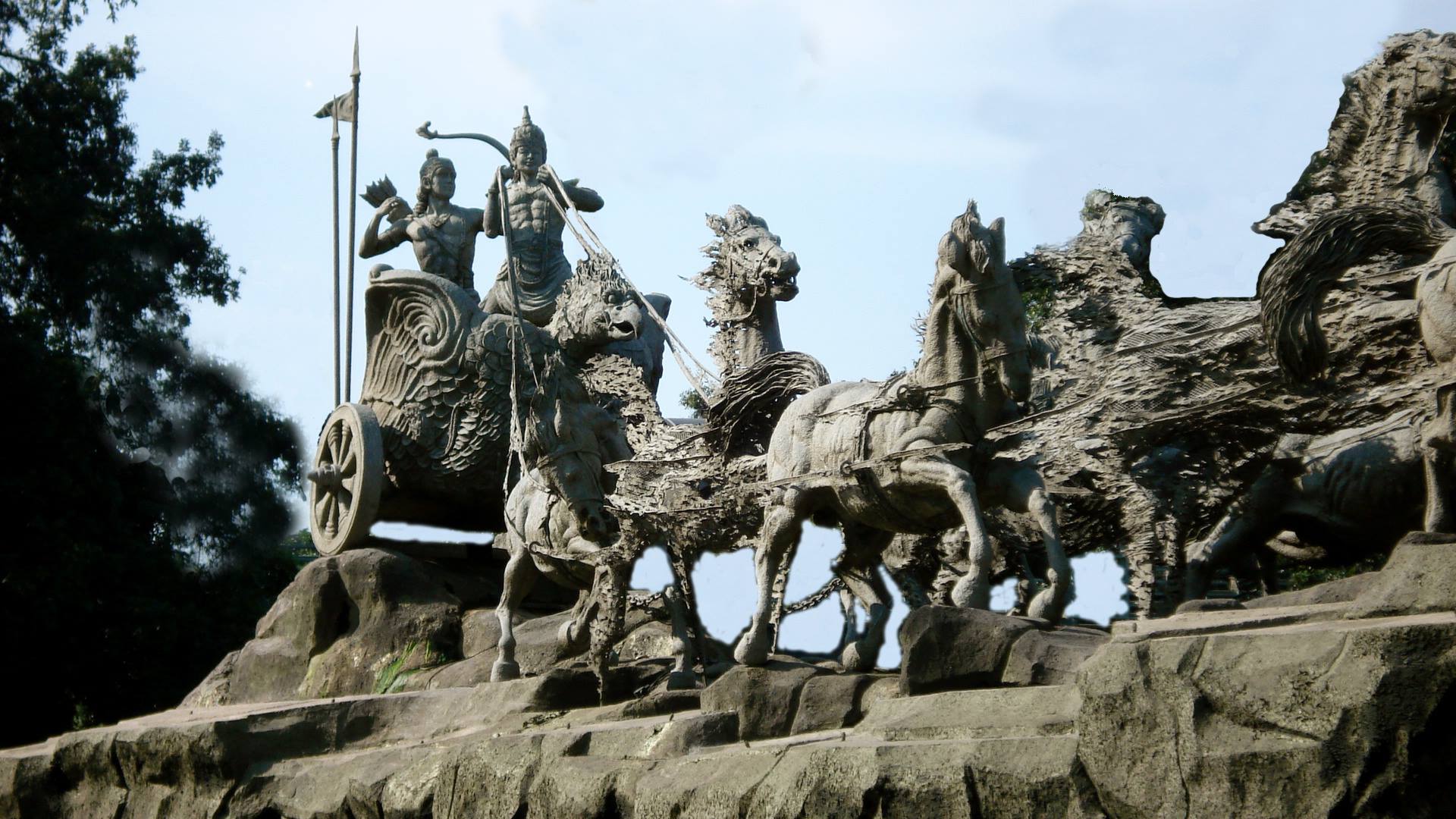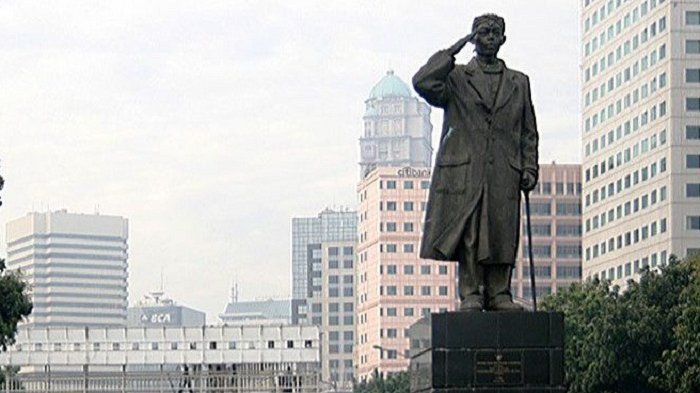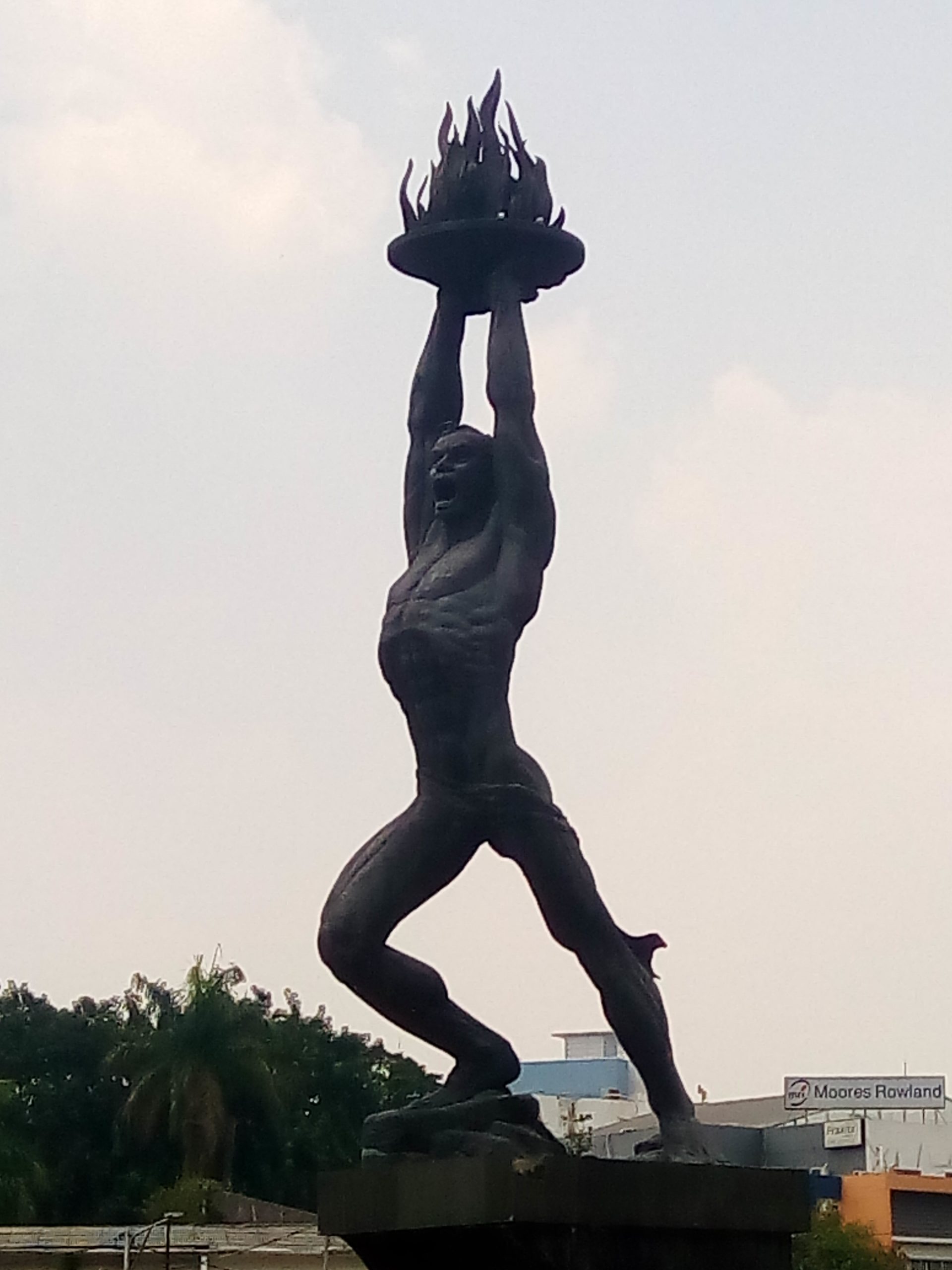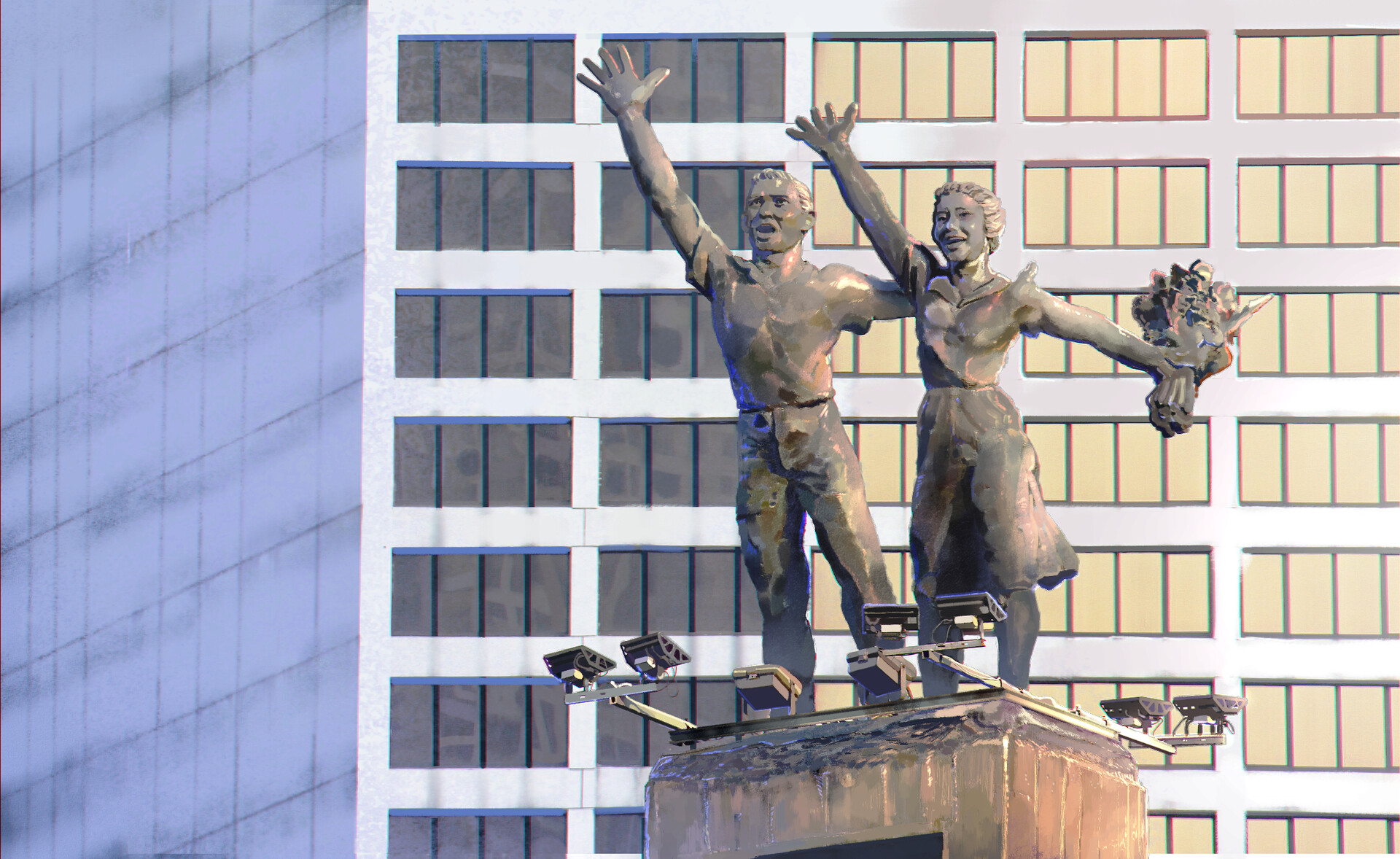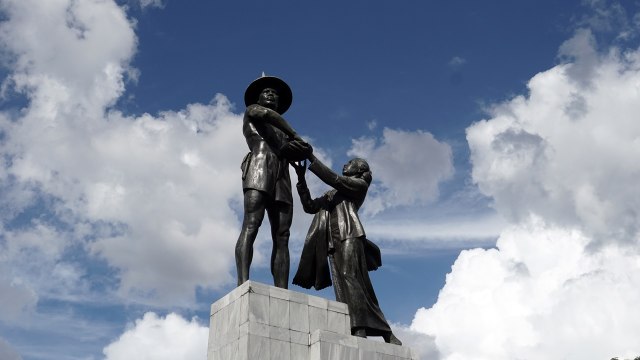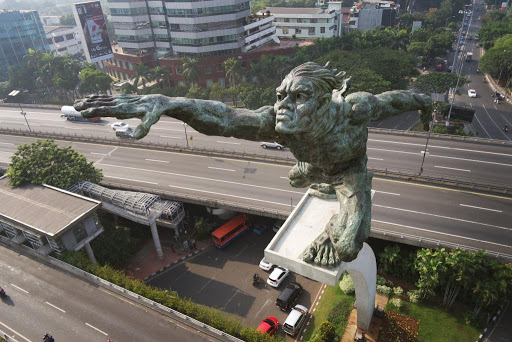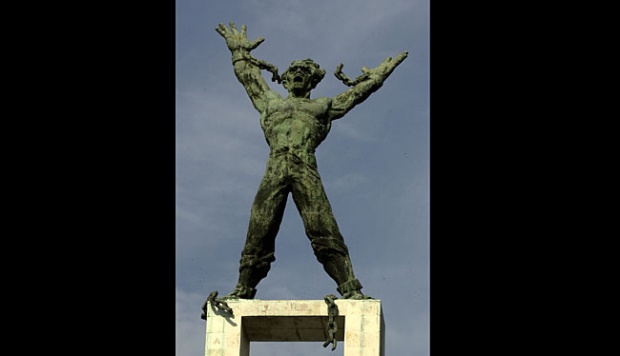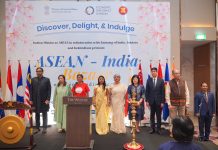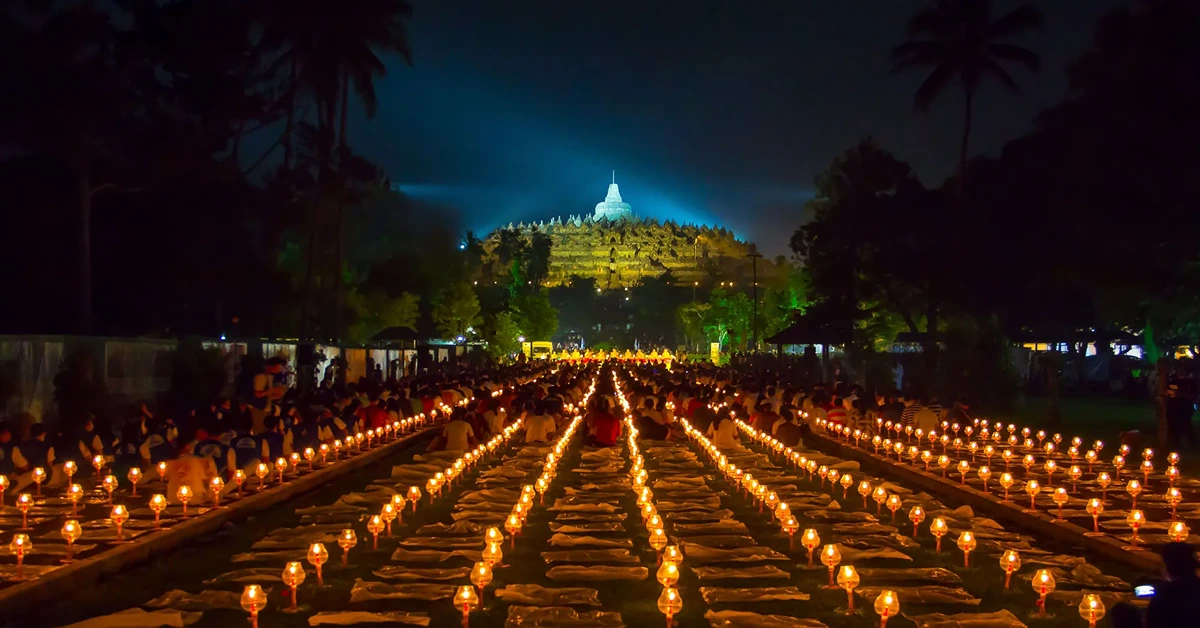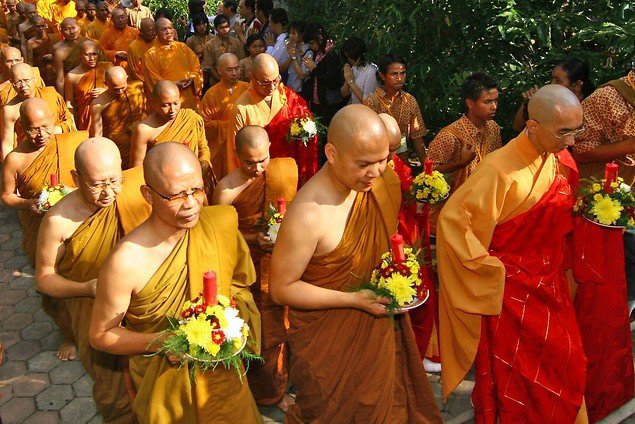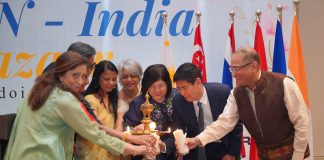Statues presented in public places are meant to make the space look more beautiful, while at the same time presenting something that should be remembered by the public. Although these beautiful landmarks are mainly used to direct the vehicle or to identify where we are, it also contains bountiful of Indonesia’s history and interesting facts which leads to its creation.
Diponegoro Statue
Prince Diponegoro Monument is a statue depicting Javanese Prince Diponegoro that is riding a horse. The statue symbolizes his struggles against the Dutch colonial rulers during the Java War of 1825-1830. It is located at the meeting point between Jalan Diponegoro and Jalan Imam Bonjol, in front of Taman Suropati Menteng, Central Jakarta. The Diponegoro statue was created based on the idea of the former Italian Consul General in Indonesia, Dr. Mario Pitta. He is an Italian businessman who is known to really admire and love Indonesia.
Prince Diponegoro was originally born with the real name Bendara Raden Mas Mustahar on 11 November 1785. He was the eldest son of the Yogyakartan Sultan Hamengkubuwono III and played an important role in the Java War between 1825 and 1830. His five-year struggle against the Dutch control of Java has become celebrated by Indonesians throughout the years and was seen as a source of inspiration for the fighters in the Indonesia National Revolution and nationalism in modern-day Indonesia among others.
Arjuna Wijaya Statue
The Arjuna Wijaya Statue or also called the Asta Brata Statue is a monument at the junction of Jalan MH Thamrin and Jalan Medan Merdeka. This statue was built around 1987 by Nyoman Nuarta, after the state visit of Indonesian President Soeharto from Turkey.
The statue of Arjuna Wijaya depicts a scene in the classic Mahabharata story, where two figures from the Pandawa camp, namely Arjuna holding an arrow and Batara Kresna who is a sais riding a war chariot with an eagle head drawn by eight horses. It symbolizes the eight philosophies of leadership “Asta Brata“, which were idolized by President Soeharto. The two of them are depicted as being in a battle situation against the Duke of Karna who comes from the Kaurava stronghold.
Arjuna Wijaya means “Arjuna’s Victory” in defending his truth and courage. Asta Brata covers the philosophy of life that teaches us to imitate the earth, sun, fire, stars, ocean, wind, rain and moon. On the part of the statue there is an inscription that reads “I will lead you to continue the struggle, along with growth that never ends”.
Jenderal Sudirman Statue
The Jenderal Sudirman Statue is one of the statues located in Jakarta, precisely in the Dukuh Atas area, in front of the BNI Building on Jenderal Sudirman Road. This statue was done by an artist and art lecturer at the Bandung Institute of Technology, Sunario. It was made to commemorate General Sudirman’s service and dedication as Commander-in-Chief during the war for Indonesian independence.
The figure of General Sudirman is depicted as standing firmly in respect and his head looking up slightly depicts General Sudirman as a figure who is firm, dynamic, but still respectful. Because it stands in the middle of an area full of various activities, the statue is deliberately designed to be simple and doesn’t require much detail.
Pemuda Membangun Statue
Pemuda Membangun statue is a statue which stands on a roundabout at the south end of Jenderal Sudirman street. It was first erected to inspire people to participate in the nation’s building, especially the youths of the new nation. For that, it was named Pemuda Membangun (“Youth Advancement”). The statue depicts a strong young man holding a plate filled with a fire that never goes out as a manifestation of the never-ending spirit of development.
Interestingly, this statue is also often called the Pizza Man Statue or Patung Laki-Laki Bawa Obor (translated as “Male Statue carrying a torch”). Other than being a symbol of youth, Yayat said that this statue was also a symbol of the new city, namely the city to the south. Jakarta started as a trading city in the north which then expanded to the south. So, this statue is located at the Senayan Bunderan, a strategic place as a meeting point between Senayan as the gateway to Central Jakarta and the South Jakarta area.
Work on this statue began in July 1971 and was inaugurated in March 1972. The inauguration was supposed to be during Commemoration of Youth Pledge Day, October 28, 1971, but the statue had not been completed so that its inauguration was delayed for several months.
Selamat Datang Statue
During the 1960s, President Sukarno ordered several constructions and city beautification projects in preparation for the Asian Games IV. These activities include the construction of the Ikada Sport Complex (now Gelora Bung Karno Sport Complex) and several statues, including the Selamat Datang Monument, also named the Tugu Selamat Datang.
The bronze Welcome Statue is the work of Trubus and Edhi Sunarso based on a sketch of an idea from the then Jakarta Governor who was also a painter, Henk Nantung. During the construction of the statue, Edhi Sunarso was visited by Sukarno, US Ambassador to Indonesia Howard P. Jones, and other ministers into his studio.
This statue is rife with meaning. Initially, this statue was built to give welcome greetings to the migrants. At the same time, the design evokes similarity with the style of Soviet sculptor Vera Mukhina and was heavy with socialist realism symbolism. Other than that, the position of the statue facing the city (north) also shows that the city was the center of business, trade and immigrants from the port at that time. This monument faces north to welcome Asian Games delegates from various countries who came from Kemayoran Airport which was still operating at that time. Currently the Selamat Datang Monument can be likened to a welcome for newcomers who have just set foot in Jakarta.
Tugu Tani Statue/Patung Pahlawan Statue
The Patung Pahlawan (translated as Heroes Monument), popularly known as Tugu Tani is an important landmark located in Jakarta, Indonesia. The Farmer Statue or Tugu Tani is located at the junction of Jalan Prapatan-Jalan Arif Rahman Hakim-Jalan Wahid Hasyim-Jalan Ikhwan Ridwan Rais and Jalan Kebon Sirih Raya.
The monument celebrates the heroes of the struggles of the Indonesian nation symbolized by a peasant youth wearing a caping with a rifle on his shoulder, a mother behind him offering him a dish of rice. The caping is a traditional farmer’s hat in Indonesia, thus the statue is also referred to as the Farmer’s Monument. This statue is officially named the Patung Pahlawan, but because of the hat, people used to call this statue the Pak Tani Statue. On the base of the statue is the inscription “Only a Nation That Can Appreciate Its Heroes Can Become a Great Nation”.
Created by two of Russia’s foremost sculptors, Matvey Manizer and Ossip Manizer as a gift from the Soviet government for their friendship with Indonesia, this statue depicts a family going to fight for freedom. The idea of this statue started when President Soekarno traveled to Moscow and he was impressed by the statues there. The statue was then built in the Soviet Union and brought to Indonesia by ship. Currently, the statue sits at the junction of Menteng and Prapatan Street, which had been an important place during the days of the August 1945 revolution. Despite positive message this landmark portrays, the statue has been controversial since armed peasants are sometimes identified with communism.
Dirgantara/Pancoran Statue
Dirgantara Monument, also known as Gatot Kaca Monument after the Javanese wayang figure, is a monument located in Jakarta, Indonesia. It is also known Tugu Pancoran, after tugu a word for statue and pedestal, and the South Jakarta subdistrict of Pancoran, where it is located. The monument was commissioned by President Sukarno in 1964 as a tribute to the Indonesian Air Force and early Indonesian aviators who flew against the Dutch to achieve independence. Besides that, it depicts the space man, symbolizing the conquest of space by the nation.
In addition, the statue that was built in front of the Air Force Headquarters by Edhi Sunarso symbolizes the spirit of exploring the sky and the progress they aspire to. For that reason, the hand of this statue points to the north where Kemayoran Airport (as the first international airport in Indonesia) was located, before finally being moved to Soekarno-Hatta International Airport. President Soekarno wanted to show the world that Indonesia as an archipelago is protected by a strong air force and uses air transportation as a means of human movement.
The rumor has it, that Soekarno kept a treasure in a place indicated by the bronze statue. However, according to urban planning observer from Trisakti University Yayat Supriatna, this statue is a symbol of the Pancoran area. This historical monument which is located in Pancoran, South Jakarta, was made at the end of President Soekarno’s leadership. In order to complete the project of making this statue, President Soekarno was even willing to sell his private car.
Pembebasan Irian Barat Statue
In the middle of Central Jakarta’s Banteng Square, there is a tall and handsome historical statue called the Patung Pembebasan Irian Barat or also known as the statue of the liberation of West Irian. This statue is seen standing upright with both hands freed symbolizing the expression of independence and symbolizing the breaking of the chain that shackled his feet. Its true meaning is to commemorate the Liberation of West Irian from the hands of the Dutch colonialists that claimed many victims.
Unfortunately, there are still many people who don’t know about the existence of this statue. This monument was built to commemorate the Trikora fighters and the people of West Irian who chose to become part of the Unitary State of the Republic of Indonesia after being free from Dutch colonialism.
The word Irian itself stands for Ikut Republik Indonesia Anti Nederland which translates as “Joining the Republic of Indonesia (and) Against the Netherlands”. It is hoped that with this statue, the Indonesian people will always remember that Irian will always be part of the Unitary State of the Republic of Indonesia.

